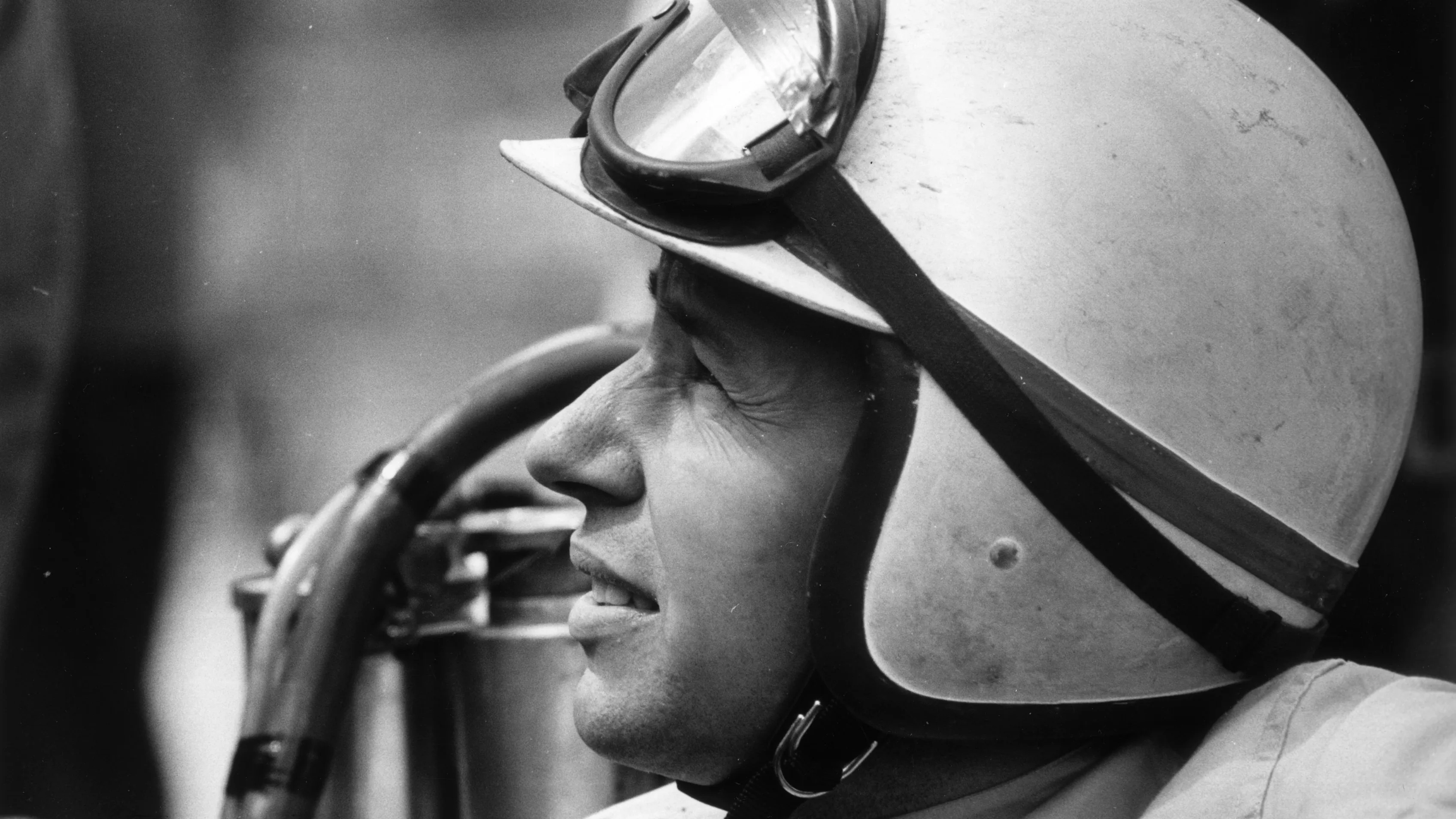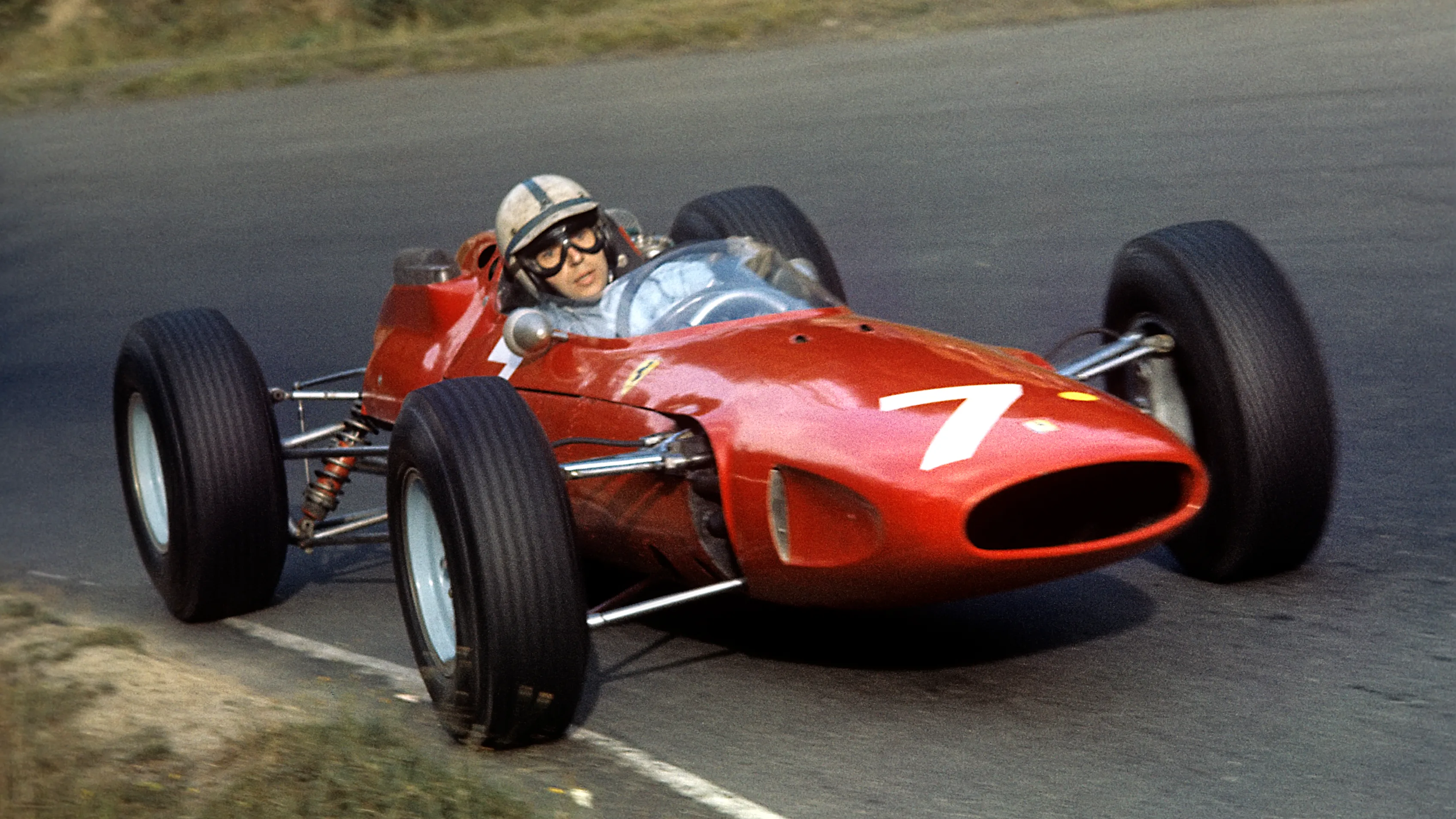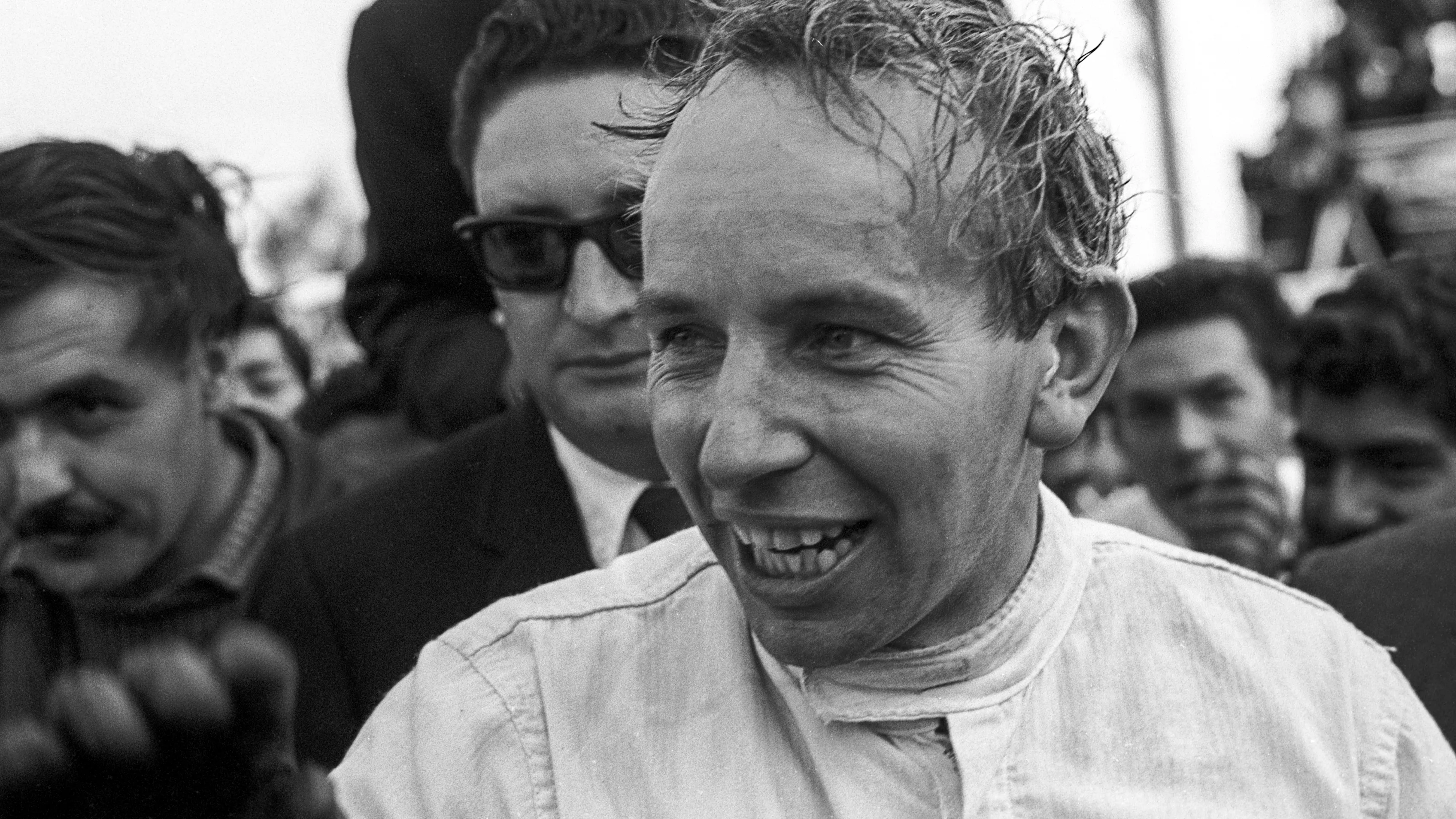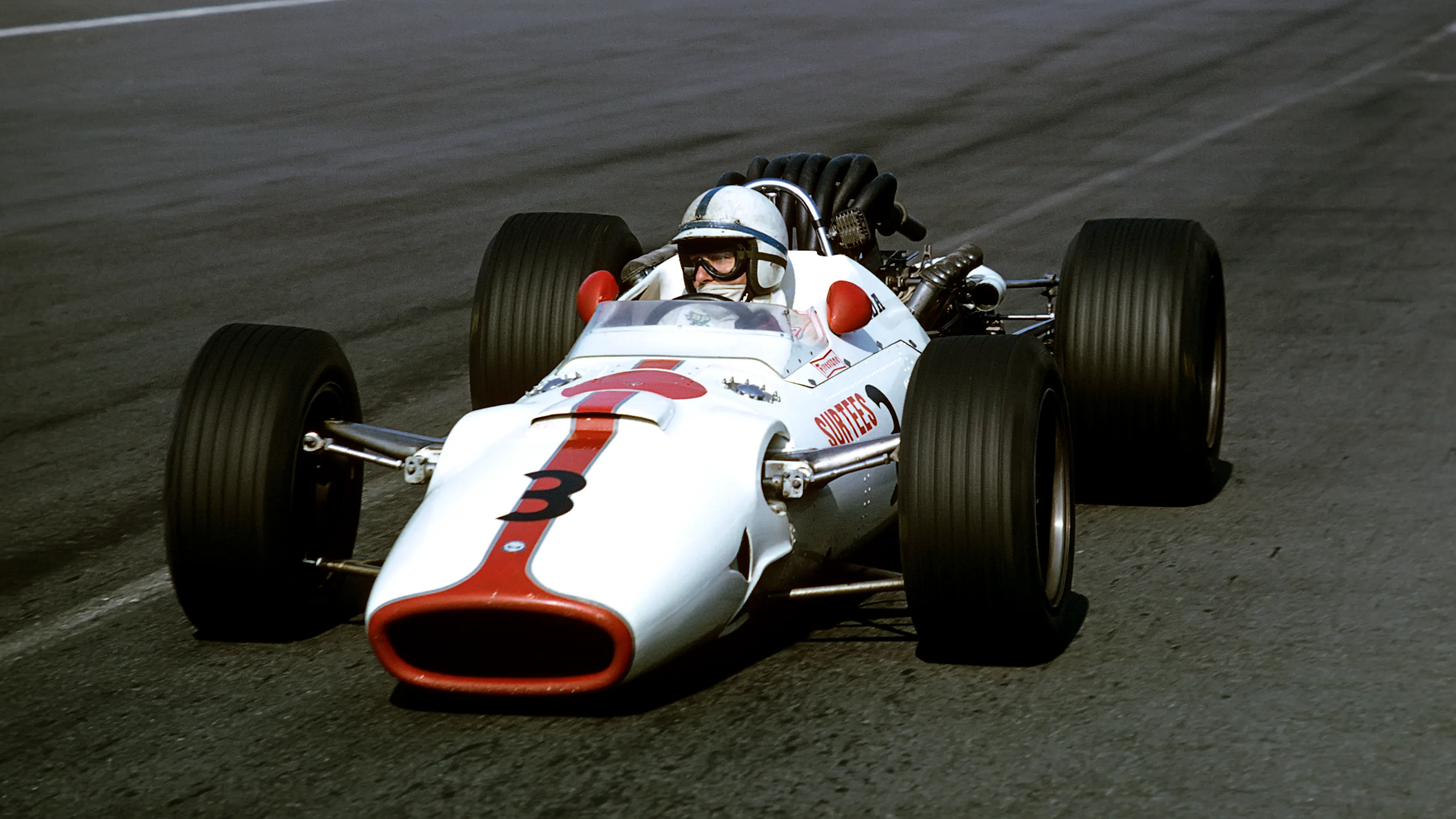HALL OF FAME - 1964
John Surtees

Famed as the only World Champion on both two and four wheels, John Surtees rode motorcycles and drove Formula 1 cars with equal skill and bravery. He made the leap from bikes to cars with surprising ease, though his quick climb to the pinnacle of motorsport was also the result of a great deal of hard effort by a serious-minded driver whose fierce independence ultimately proved to be a handicap. Having won the driving title at Ferrari, he left after a violent argument and was thereafter ill-equipped to win consistently.
His family background gave John Surtees a head start on motorcycles. His father Jack, who owned a motorcycle shop in South London, was a three-time British motorcycle sidecar champion. The eldest of three children, John was born on February 11, 1934, and by the time he was 11 he had a bike of his own and could ride and repair it with equal skill. At 16 he left school and became an apprentice engineer at the Vincent motorcycle factory. A year later he competed in his first solo race and won it. In 1955 he became a member of the Norton works team and rode to victory 68 times in 76 races. From 1956 to 1960 he raced 350cc and 500cc bikes for the famed Italian MV Agusta team and won seven world championships.

His transition to becoming a star in cars was nearly as swift. In 1959 the by now famous bike racer was given test drives by eager talent-hunters. In his first single-seater race, at Goodwood in a F3 Cooper entered by Ken Tyrrell, Surtees finished a close second to Jim Clark, then a promising beginner with Team Lotus, whose boss Colin Chapman promptly hired Surtees for the last four races of the 1960 Formula One season. His results - a second place in the British Grand Prix and a near win in Portugal - made Surtees a driver in demand. He stopped racing motorcycles and considered several Formula 1 offers, including one from Chapman to partner Clark at Team Lotus. Instead, Surtees opted to drive a Cooper in 1961 and a Lola in 1962, neither venture producing much in the way of results. However, his twin strengths of talent and tenacity kept Surtees in the limelight, especially in Italy, where the former MV Agusta star was now invited to lead the country's famous Formula 1 team.
Enzo Ferrari (who had managed a motorcycle racing team in the 1930s) was a great admirer of the passion and fighting spirit shown by Surtees the bike racer, and hired him as his number one Formula 1 driver for 1963. In that year's German Grand Prix at the mighty Nurburgring a ferocious fight with Jim Clark's Lotus resulted in a first championship win for John Surtees. In Italy, the former motorcycle hero known as 'Son of the Wind' and 'John the Great' was hailed as Ferrari's saviour. Nicknamed 'Big John' in English, he also became 'Fearless John' - particularly in 1964 after he won another brilliant victory at the daunting and dangerous Nurburgring, where he beat Graham Hill in a BRM. With another victory, at Monza, Surtees was in contention for the title. So, too, were his countrymen Hill and Clark, each of whom had also won two races. In their Mexican Grand Prix championship showdown Clark's Lotus was waylaid by an oil leak and Hill's BRM was accidentally shoved out of contention by Lorenzo Bandini's Ferrari, whose team mate finished second to become World Champion.

For John Surtees, the satisfaction of becoming the first World Champion on both two and four wheels was only mitigated by the fact that he had clinched all his bike titles with race victories. Though he would win three more Formula 1 championship races, there were no more driving titles in his future. To some degree he was a victim of circumstances, though his feisty personality and fierce independence were also factors.
He developed a reputation for being argumentative and cantankerous. Certainly, he said what he thought and did not suffer fools gladly. While most drivers left their aggression in the cockpit, Surtees seemed to keep his 'race face' on, which could be intimidating.
In 1965, when Ferrari's Formula 1 cars were less competitive, Surtees ran his own Lola sportscar in the lucrative North American Can-Am series. In one of those races, late in the season at Mosport in Canada, his Lola suffered a suspension failure and crashed heavily, leaving Surtees with multiple injuries. Over the winter he forced himself back to fitness and in the Belgian Grand Prix at Spa he stormed through pouring rain to score one of his most impressive victories. And yet this proved to be his last race for Ferrari. Ever since 1963 Surtees had been at odds with team manager Eugenio Dragoni. At the Le Mans 24 hour race their feud boiled over and Surtees stalked off never to return. Eventually, he agreed with Enzo Ferrari that their split was a disastrous mistake for both parties.

Surtees finished 1966 with Cooper, for whom he won the season finale in Mexico, then spent two years leading Honda's new Formula 1 team. He helped develop the Japanese cars and was rewarded with a satisfying win in Ferrari's home race, the 1967 Italian Grand Prix at Monza, though Honda left Formula 1 racing a year later. After a frustrating 1969 season with BRM Surtees decided to follow the lead of Jack Brabham and Bruce McLaren and form his own team, though he was destined to have much less success. In nine Formula 1 seasons the best results for Team Surtees were a second and a third for Mike Hailwood, himself a multiple world champion on bikes.
The Team Surtees boss retired from driving in 1973 to concentrate on trying to find more performance for his cars and enough money to pay for it. Not enough of either was found, despite Surtees pushing himself mercilessly the way he did as a driver. His constant striving exacerbated medical problems (a legacy of his 1965 accident) that eventually forced Surtees out of Formula 1 racing in 1978.
His return to health gave him a new lease on life and the former curmudgeon mellowed considerably. He retired to a beautiful old house in the English countryside, where with a new wife (his first marriage was childless) he raised a family of three. He developed an interest in architecture and was successful in real estate ventures. Only then was the one and only champion on two wheels and four able to fully enjoy his singular achievements - of which he said: "I was a bit nuts, really."
In his later years Surtees spent much of his time working tirelessly for The Henry Surtees Foundation, set up after his son was tragically killed in a freak accident in a Formula 2 race in 2009. He passed away peacefully with his family by his side in March 2017, aged 83.
Text - Gerald Donaldson